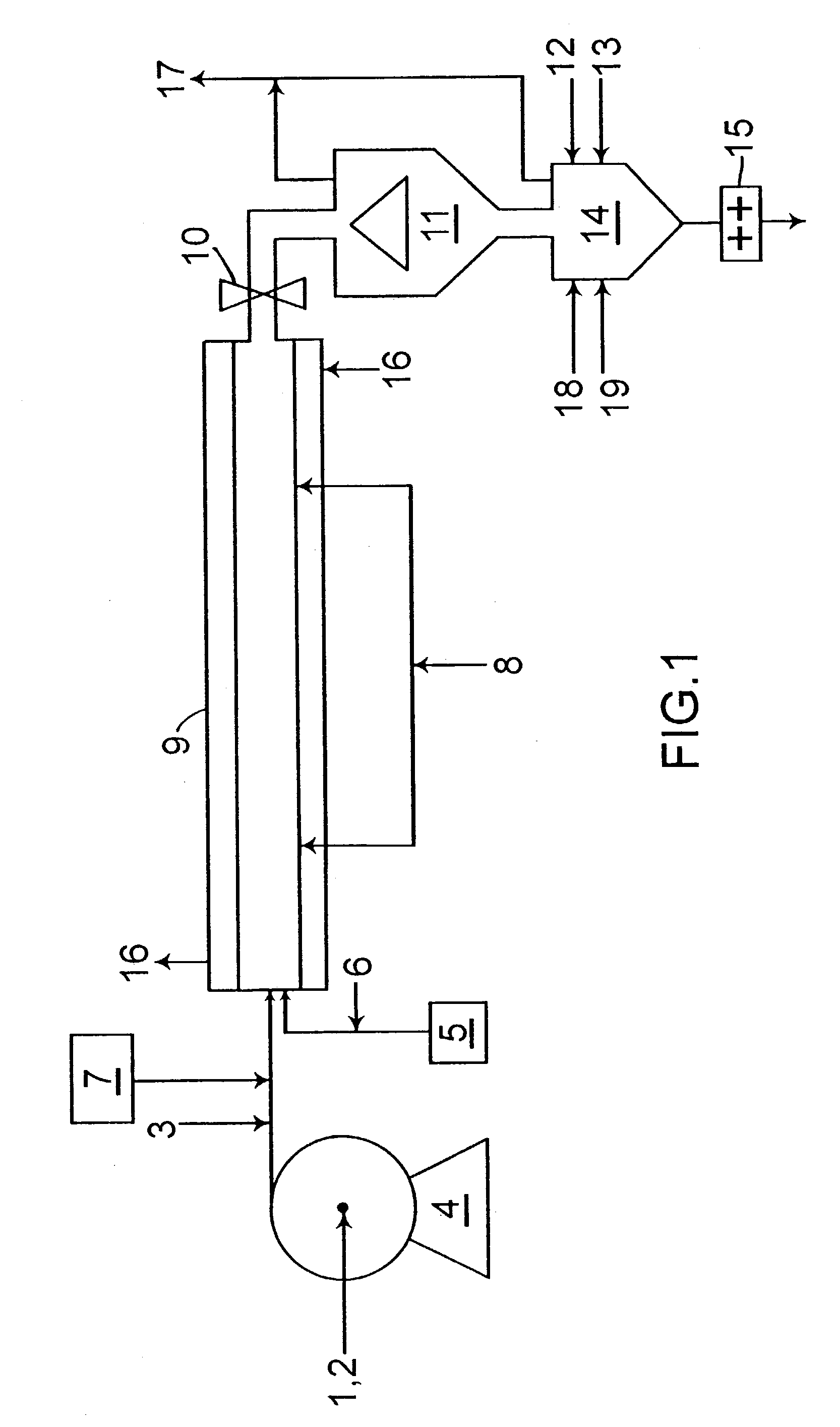High temperature process for the production of atactic, amorphous, tacky propylene polymers
a propylene polymer and high temperature technology, applied in the field of high temperature process for the production of non-crystalline or low-crystalline polyalphaolefins, can solve the problems of poor physical properties of non-crystalline or low-crystalline polymers, material burning or discarded, and variable product quality
- Summary
- Abstract
- Description
- Claims
- Application Information
AI Technical Summary
Benefits of technology
Problems solved by technology
Method used
Image
Examples
example i
[0028]The organoaluminum solution was prepared by mixing an equimolar amount of triethyl aluminum and diethyl aluminum chloride in a heptane solution. This solution was fed to the tubular reactor to maintain an Al / Ti mole ratio of 300 / 1. The solid titanium component of the catalyst is prepared by (1) co-comminuting 8 moles of magnesium chloride with 1.25 moles aluminum trichloride for 12 hours. The product of this step (1) is then co-comminuted with 0.5 moles of titanium tetrachloride for 15 hours in the absence of any electron donor. The resulting solid catalyst has a titanium content of about 2.5 wt %. This catalyst is then pumped continuously to the tublar reactor as a 10 wt % mixture in a 50 / 50 weight ratio blend of mineral oil and petrolatum, at a rate which maintains the polymerization rate and reactor temperature and yields very high catalyst efficiencies.
example ii
[0029]An alternate brown TiCl3 catalyst system is prepared by mixing 5 liters of 0.1 molar diethyl aluminum chloride with 5 liters of 0.1 molar titanium tetrachloride TiCl4 (both in heptane) in a 2 / 1 molar ratio of aluminum to titanium Al / Ti and allowing them to prereact for 15 minutes at ambient temperature, The resulting brown slurry is then slowly added to the tubular reactor at the required rate to maintain a constant temperature and polymerization rate. Any of the indicated monomers may be used with this catalyst system.
example iii
[0030]Another catalyst system is prepared by suspending 40 pounds of a violet powder composed of ball-milled 3TiCl3.AlCl3 in 60 pounds of mineral oil to form a 40 wt. % slurry. This slurry is added to the reactor with the monomer(s) after mixing with aluminum triethyl in an Al / Ti molar ratio of 10 / 1.
PUM
| Property | Measurement | Unit |
|---|---|---|
| Temperature | aaaaa | aaaaa |
| Temperature | aaaaa | aaaaa |
| Temperature | aaaaa | aaaaa |
Abstract
Description
Claims
Application Information
 Login to View More
Login to View More - R&D
- Intellectual Property
- Life Sciences
- Materials
- Tech Scout
- Unparalleled Data Quality
- Higher Quality Content
- 60% Fewer Hallucinations
Browse by: Latest US Patents, China's latest patents, Technical Efficacy Thesaurus, Application Domain, Technology Topic, Popular Technical Reports.
© 2025 PatSnap. All rights reserved.Legal|Privacy policy|Modern Slavery Act Transparency Statement|Sitemap|About US| Contact US: help@patsnap.com

